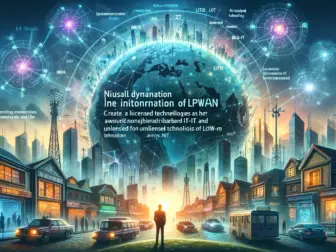Tag - IoT market trends
The Latest IoT Market Trends: A Comprehensive Overview
The Internet of Things (IoT) market is rapidly evolving, with new trends and developments shaping the industry landscape. From the rise of edge computing to the increasing adoption of artificial intelligence (AI) in IoT devices, there are several key trends that are driving innovation in the market.
One of the most significant trends in the IoT market is the growing emphasis on edge computing. Edge computing involves processing data closer to where it is generated, rather than sending it to a centralized cloud server. This approach reduces latency and improves efficiency, making it ideal for applications that require real-time processing, such as industrial automation and autonomous vehicles. As a result, many IoT companies are incorporating edge computing capabilities into their devices to meet the demands of these emerging markets.
Another important trend in the IoT market is the increasing integration of AI and machine learning technologies. These advanced capabilities enable IoT devices to analyze and interpret data more effectively, leading to improved decision-making and predictive maintenance. For example, AI can be used to identify patterns in sensor data that indicate potential equipment failures, allowing businesses to proactively address maintenance issues before they cause disruptions. As AI continues to advance, we can expect to see even more sophisticated applications in IoT devices, further enhancing their value and functionality.
Security is also a top concern in the IoT market, as the proliferation of connected devices has created new vulnerabilities for cyberattacks. To address this challenge, many IoT companies are implementing robust security measures, such as encryption, authentication, and access control, to protect data and prevent unauthorized access. Additionally, the adoption of blockchain technology is gaining traction as a way to ensure the integrity and security of IoT data, through decentralized and tamper-proof ledgers. By prioritizing security in their IoT solutions, companies can build trust with customers and mitigate the risks associated with interconnected devices.
Furthermore, the IoT market is witnessing a shift towards interoperability and standardization, as companies seek to create seamless connectivity between devices and platforms. This trend is driven by the need for greater flexibility and scalability in IoT deployments, enabling devices from different manufacturers to communicate and collaborate effectively. By adhering to industry standards and protocols, companies can accelerate the development and deployment of IoT solutions, while also ensuring compatibility and interoperability across diverse ecosystems.
In conclusion, the IoT market is experiencing rapid growth and transformation, driven by key trends such as edge computing, AI integration, security enhancements, and interoperability. By staying abreast of these developments and adapting their strategies accordingly, companies can capitalize on the opportunities presented by the evolving IoT landscape and deliver innovative solutions that meet the needs of today’s connected world.
